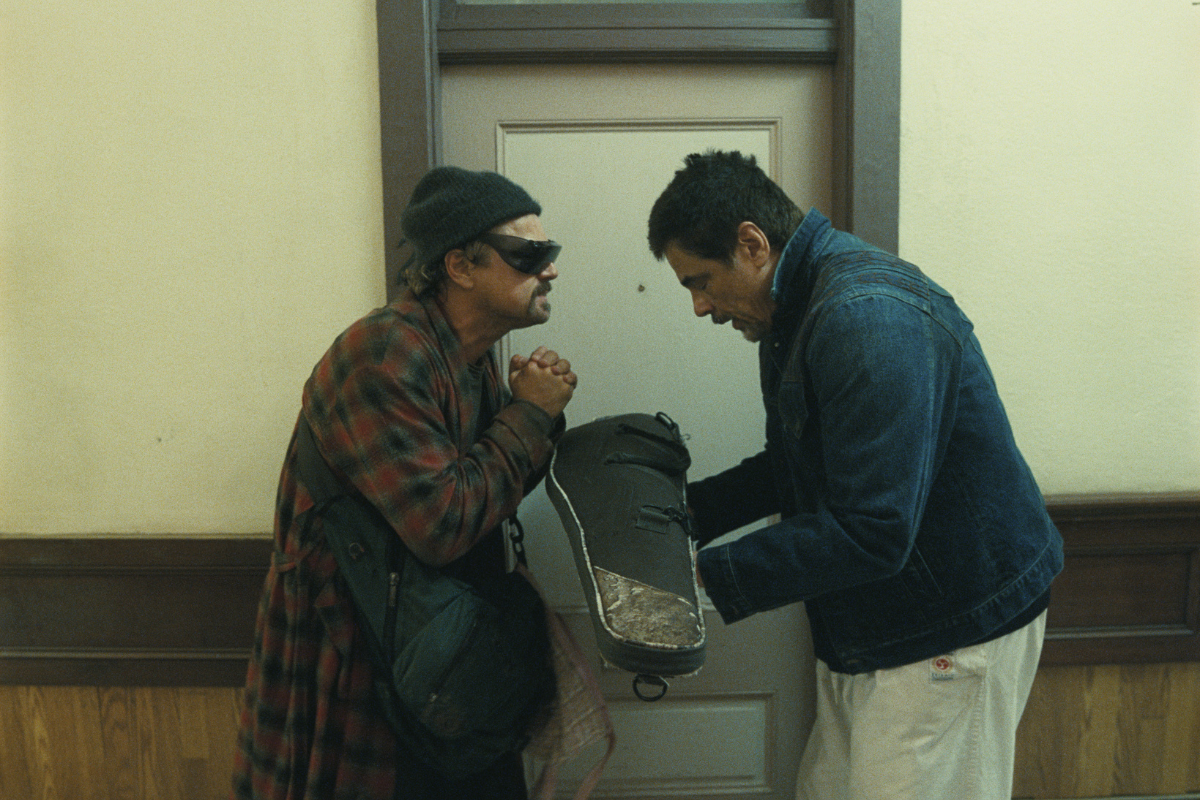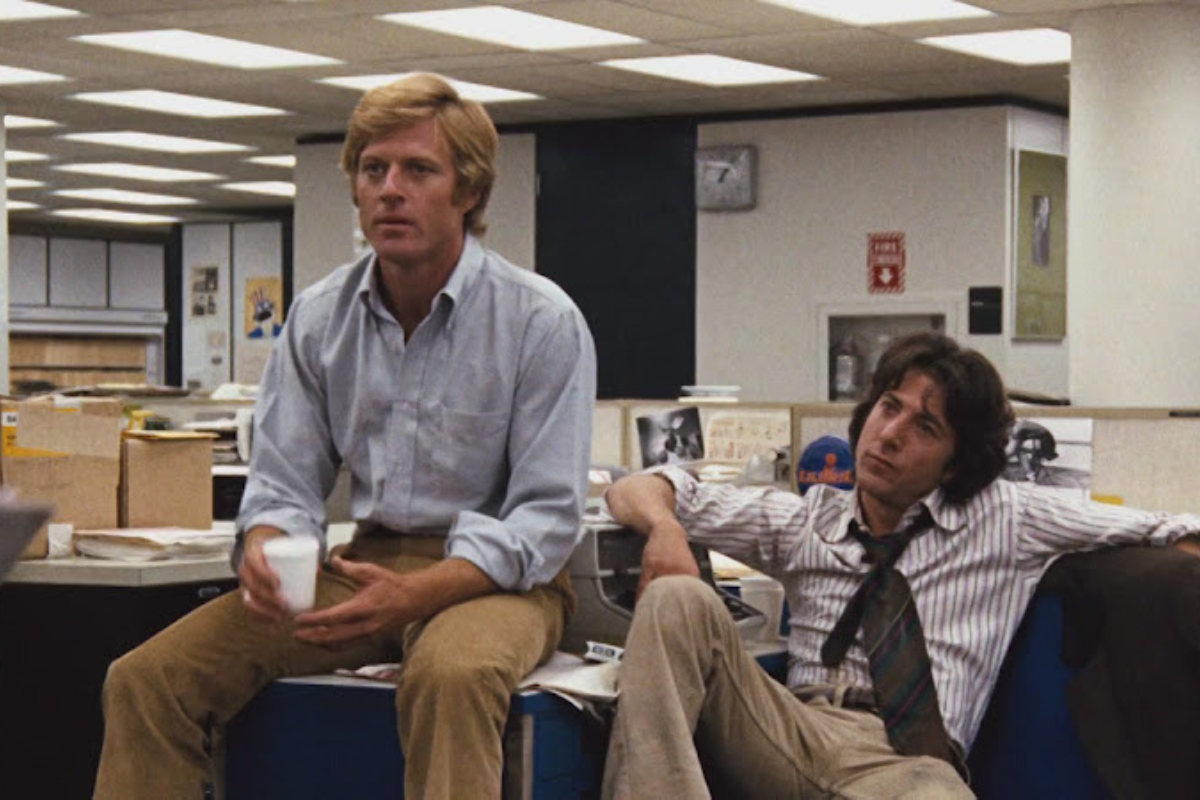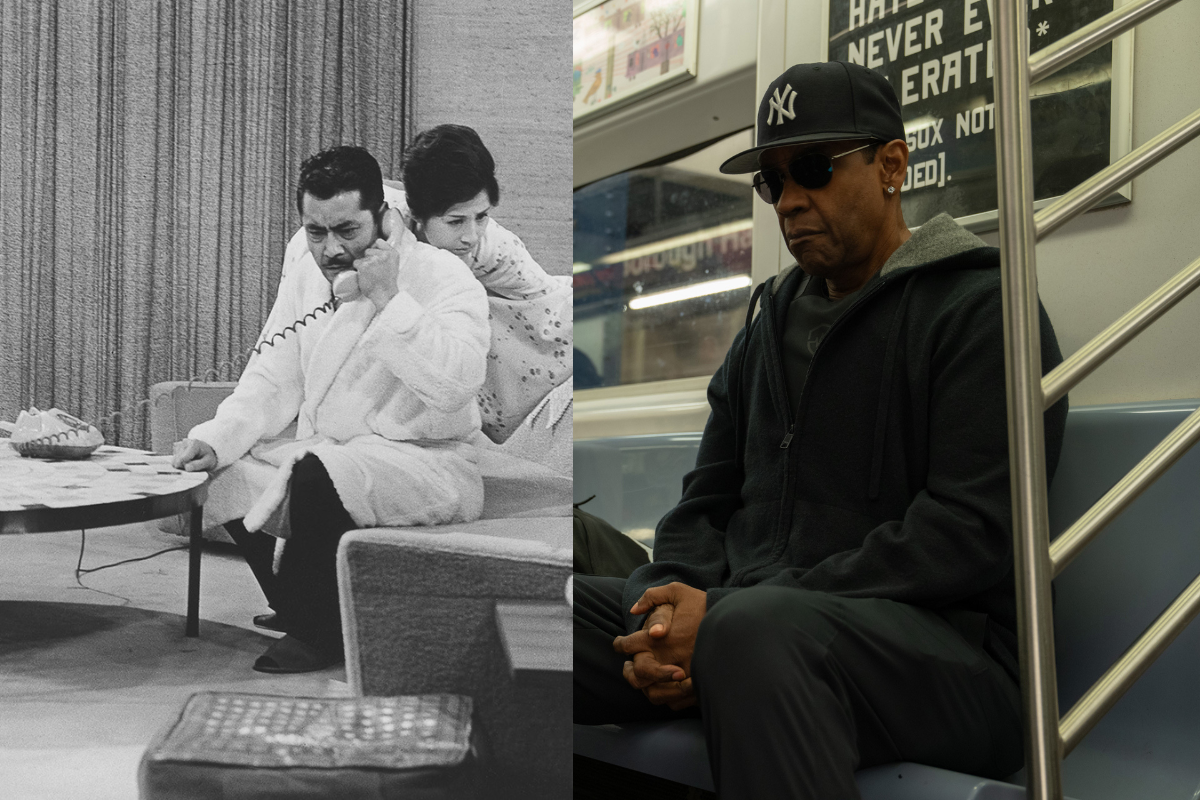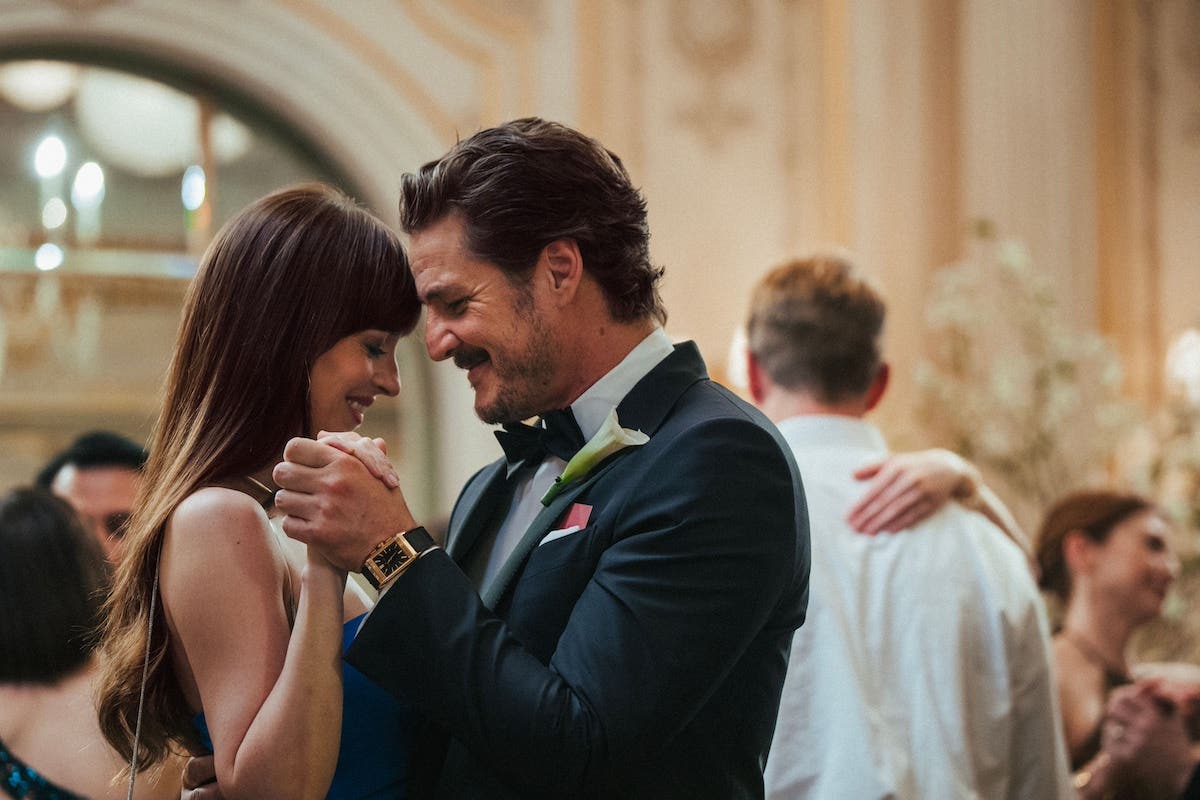UNDERSTANDING SCREENWRITING: A Good Half, Two Bad Wholes, and…
The films are Sinners, The Accountant 2, A Simple Favor 2, The Return, and some TV with White Lotus and Matlock.
The First Half Is Great, Then ...
Sinners (2025. Written by Ryan Coogler. 137 minutes)
Sinners hit industry headlines by being the first original (non-sequel, non-universe, non-adapted) film to top the weekend box office since, well, who knows? That’s a good thing. More originality in films is a very, very good thing.
I could not be happier for the film.
As to the film, however, it is deeply flawed. The opening hour is great. We are in a small Mississippi town early in the Depression. The production design, locations, and the cinematography all beautifully capture the atmosphere of the town and its people.
And the writing (Coogler is not only the writer but the director) wastes no time in setting up the characters. In the opening scene, Sammie Moore, a teenager (Black as are almost all the characters in the film; so much for the myth that white audiences will not turn out in big numbers for Black stories), looking like death warmed over, staggers into his father’s church, clutching the head of his broken guitar. His father, the preacher, demands he drop the piece. Well, don’t you want to know what happened?
We jump back to the day before. Smoke and Stack, two twin brothers, have come back from Chicago and want to open up a juke joint that night. They have the money to do it. Both twins are played brilliantly by Michael B. Jordan who subtly shows us the difference between the two, even when they are not wearing their different colored hats.
We watch the twins as they go about the business of setting up the juke joint in an old building they buy with cash. Movies are good at showing process, and Coogler makes the fact that they do it all in one day help speed the film along.
About 40 minutes into the film, a character who turns out to be a vampire shows up. He is white and he talks his way into the house of a white couple. Soon we see the white couple have been turned into vampires, certainly foreshadowing what will come, which is OK because we don’t know where Coogler is going with it.
By night the juke joint is ready to open, and Coogler lets go with the best scene in the film. We have been hearing a variety of Black music, and we now get an even greater variety of music, with musicians dressed in costumes from Africa and elsewhere. We also get most of the characters we have met together in one place. The music and dancing get so energetic that the roof catches on fire and the building burns down.
Wow! But we are only halfway through the film. Remember the vampires? Well, they show up at the joint. It looks as though the building is still standing, so the Black folks go into the building and fight off the vampires. So what is wrong with that? Simply this: the movie now loses all the richness of texture and character that has made the first half so compelling. What has been a fresh and original film turns into a big budget remake of Night of the Living Dead (1968), which we have already had more than enough of. The richness of the acting as well as the characters also gets lost. Michael B. Jordan’s two characters become indistinguishable. Jordan turns into an action movie hero, which he is great at, but that’s not what we signed up to see. In the first half of the movie, Hailee Steinfeld plays a light-skinned Black woman who can pass for white, and Steinfeld captures a lot of the nuances of the character. When she becomes a vampire, she just runs around shrieking, standard vampire behavior. The same thing happens with other actors.
The fight scenes go on and on and on and do not get better or more inventive.
Later Coogler gives us what feels like a tacked-on scene. The surviving twin takes on a group of Ku Klux Klansmen who want to destroy the juke joint. The scene comes out of nowhere and is just Jordan mowing down all the white guys. Coogler would have had a better movie if that had been set up better. How about having all the Black vampires killing the KKK guys?
Sequels, Bah, Part 1.
The Accountant 2 (2025. Written by Bill Dubuque. 132 minutes)
The original Accountant came out in 2016, and I liked most of it, as you can tell from my review here.
I particularly liked the chemistry between Ben Affleck, playing a slightly autistic accountant who works for both legitimate and illegitimate organizations, and Anna Kendrick, playing an accountant at a legitimate firm. Affleck seemed to be doing Buster Keaton and Kendrick’s perkiness bounced off that well.
Guess who is not in the sequel? Yup. Kendrick. Sort of taking over for her is Cynthia Addai-Robinson as Marybeth Medina, a Treasury official. The character was in the first one, but do you remember her? I don’t. Mostly I think because she was a plot function more than a character. The character, and Addai-Robinson, just do not bring the pizzazz Kendrick did.
Who Dubuque—who wrote the first one—has brought back is Jon Bernthal as Braxton, the brother of Affleck’s Christian Wolff. Braxton was the wild man out in the first film, which was great as a supporting role. Here he is mostly annoying. Early in the film there is a scene where he is rehearsing for a telephone call he has to make. It is the kind of over-the-top scene that plays like an actor’s exercise than a real scene. I suspect director Gavin O’Conner may have just let Bernthal improvise and then did not cut it. There is a long dialogue scene between Braxton and Christian on top of a motor home that goes on and on and on.
One of the good supporting actors in the original was J.K. Simmons as a Treasury agent on Christian’s trail. In this film he has a cameo in the opening scene in which his character is killed. One problem often with actors whose characters are killed early in a film is that they have read the script and know they are going to be killed and therefore tend to overact in the scenes they are in. Simmons does not do that here. He beautifully underplays. If you are an actor, you will want to study what he does and how he does it.
There is even more action than in the first film and it gets just as tiresome as the vampire scenes in Sinners. There is a big shootout finish. Well, not exactly, since the movie goes on much longer than it should after it because there are a large number of loose ends that, quite frankly, we don’t care enough about to care how they are tied up.
Sequels, Bah, Part 2.
Another Simple Favor (2025. Written by Jessica Sharzer and Laeta Kalogridis, based on the characters created by Darcey Bell. 122 minutes)
I liked the original A Simple Favor (2018) a lot, as you can tell from my review, which you can read here. It was a nice, compact character study/thriller. It was a script by Jessica Sharzer that had been turned down by a few people and was sent to Paul Feig, who had been doing comedies and wanted to do something like Hitchcock. As I pointed out in my review, the script was better than most Hitchcock movies because it focused on character. Feig was smart enough not to bend the script into a Hitchcock film.
The script of the first film was very focused on the characters of Stephanie (Anna Kendrick), a housewife who does a video blog, and Emily (Blake Lively), a rich woman who disappears. The film follows Stephanie, who turns out to be a great amateur detective. Each scene works well on its own and moves the story forward, while providing a lot of good secondary roles played by Jean Smart and Linda Cardellini, among others.
All the things that went right in that film go wrong in this film. Stephanie is already in the amateur detective business, so here she mostly wanders around looking baffled. Emily, who went to prison, is now out and is going to marry a rich Italian guy. She asks Stephanie, whose sleuthing sent her to prison, to come to Italy for the wedding and be her matron of honor. Huh? Why she does that is never seriously explained.
The scene writing, which was great in the first film, is awful here. There are shapeless scenes between Lively and Kendrick that do not go anywhere. Allison Janney and Elizabeth Perkins show up as relatives of Emily, but they can do nothing with the material they are given. That’s a crime.
I would love to give away one of the twists at the end that gives Lively something interesting to play, but I am not going to.
Now, the question is, how did this script end up such a mess? The first one was based on a novel by Darcey Bell, which is why I think it was more focused. Jessica Sharzer had the sole screenplay credit on the first, but here she shares the credit with Laeta Kalogridis. Since the credits separate them with an “and” it means they did not work together. I suppose it is possible that Sharzer’s drafts were worse than what we see on the script, but I cannot imagine how.
Kalogridis has an interesting set of credits. The script she worked on for Alexander (2004) was also a mess, but her solo-credited script for Shutter Island (2010) was first-rate. She was also a producer or executive producer on Avatar (2009), White House Down (2013), and Ambulance (2022). She obviously has a taste for big-budget action movies and may have taken the script in that direction.
I did not mention that the wedding takes place in Capri, with lots of gorgeous shots of the scenery. Maybe The White Lotus was an influence here as well.
The Stars of The English Patient Together Again!
The Return (2024. Screenplay by John Collee & Edward Bond & Uberto Pasolini, based on The Odyssey by Homer. 116 minutes)
Larry Richardson, my Classics professor at Yale, once described Homer’s The Odyssey as “a domestic comedy about a husband who did not want to go home.”
Odysseus went to Troy with the Greeks to take part in the 10 year Trojan War. He was known as “wily Ulysses,” Ulysses being his name in the Roman translations. He is credited with coming up with the idea of using a wooden horse filled with Greek soldiers to sneak into Troy and win the war.
Great. So he is a big hero, but then he takes 10 more years to get home to Ithaca. The first 12 books (chapters for us) of The Odyssey are about his adventures in those 10 years. Most movies about Odysseus spend most of their time on those adventures. See the 1954 film Ulysses or the 1997 miniseries The Odyssey for examples.
But Homer spends the last 12 books on what happens when he gets home, and that’s what the makers of The Return focus on. The writing crew is an interesting lot. Uberto Pasolini is also the director, and no, he is not related to the Italian filmmaker Pier Paolo Pasolini. He is, if you want to keep score, the nephew of the great Italian director Luchino Visconti. John Collee is a doctor who writes novels and screenplays. His best-known screenplay is for the 2003 film Master and Commander: The Far Side of the World. Edward Bond is the great British playwright whose 1965 play Saved helped destroy the censorship system in the British theatre. If you want to know more about him and his work, you can read the Wikipedia entry on him here. He also did some screen work, such as the English dialogue for Blow-up (1966) and the screenplay for Walkabout (1971).
Bond died a year ago.
We are not talking about amateurs here, but as Mr. Wilder and Mr. Diamond reminded us in 1959, nobody’s perfect. In Homer when Odysseus arrives back in Ithaca, he finds one or two people who recognize him and help him plot his return. In the film it takes forever for one friend to realize who he is. Homer, who was telling this story over and over again until somebody finally wrote it down, realized it is more dramatic if there are some people who recognize him. Will they keep the secret? Will they turn him over to the scumbags who want to marry his wife Penelope and take over his kingdom? You see what the screenwriters are giving up. Their version is slower and less interesting than Homer’s.
On the other hand, they are smart enough not to do what other writers dealing with the material do. Homer has the gods and goddesses involved in the action. The screenwriters make Odysseus have to work everything out on the human level, which makes it more convincing for us in the modern world.
It does take a while for Odysseus to get his stuff together and do away with the suitors, because the screenwriters make it clear that he has lost his taste for bloodshed. But ultimately a man’s gotta do what a man’s gotta do.
Odysseus is played by Ralph Fiennes and his face is so distinctive that you have some trouble believing almost nobody recognizes him. But if you have Fiennes in the role, you want to see his face.
Penelope is played by Juliette Binoche, Fiennes’ co-star in The English Patient, and you may or may not enjoy seeing them together again.
A Massive Disappointment.
The White Lotus: Season Three (2025. Written by Mike White. 8 stultifying hours)
Given the impact that The White Lotus had, particularly in its second season, where Mike White corrected the flaws in the first season, everybody in the known universe was looking forward to season three. There were multiple articles in the Los Angeles Times as the season began. They began to dribble away as it became apparent that season three was a dud.
By now you have probably read that a lot of people hated this season. They are right, and here are the reasons I think it did not work, i.e., as usual, the script. In my review of the first season, which you can read here, I noted that all the scenes seemed to be the same: people being awkward. In the second season, as you can see from my review here, White improved things by having much stronger storylines.
The problem with three is that there is no narrative drive. We learn people have their problems, then for almost the full eight hours there is no forward momentum in the plot lines, as there was in two. So the great cast just stands around singing the same notes.
I think somebody saw the problem and about two hours of the eight hours are taken up with a LOT of second unit shots of monkeys, trees, snakes, statues, etc.
All the actors you know do what they can with the material, which is not much.
The actors you do not know try to keep up, without much luck. But I do want to mention a young actor, a “Nepo baby,” who I think has a great future. He is more handsome than his dad was in his youth, and the son is already a much better actor than his father ever was. His name is Patrick Schwarzenegger.
This Is More Like It.
Matlock (2025. Last three episodes of the season: Episode 17: “I Was That, Too” written by Sarah Gertrude Shapiro; Episode 18: “Tricks of the Trade, Part one” written by Michelle Leibel & Nikki Renna; Episode 19: “Tricks of the Trade, Part two” written by Nikki Renna. Three hours)
In my first mini-review of this show you can read here, I said the show was a vehicle for the great Kathy Bates, which it is. As the show developed Maddie (Bates) began to work closer with hotshot attorney Olympia (Skye P. Marshall) without letting her know she was looking for incriminating evidence that somebody at the law firm had helped a pharmaceutical company release a dangerous drug that had killed Mattie’s daughter.
In the final three episodes we learn that Olympia has figured out what Maddie has been up to. Olympia feels betrayed and confronts Maddie. What you get are several great scenes, brilliantly written by the writers, as the two women go at it. Kathy Bates is great, as we all have known for decades. I had not seen Marshall in anything, but all I need to tell you is, she more than holds her own against Bates. The writers and showrunners knew by now they could write scenes that are strong enough for both the women to sink their teeth into. Find them streaming somewhere and see for yourself.
Tom Stempel is a Professor Emeritus at Los Angeles City College, where he taught film history and screenwriting from 1971 to 2011. He has written six books on film, five of them about screen and television writing. You can learn more about his books here. His 2008 book Understanding Screenwriting: Learning from Good, Not-Quite-So- Good, and Bad Screenplays evolved into this column. The column first appeared in 2008 at the blog The House Next Door, then at Slant, and then Creative Screenwriting before it found its forever home at Script.
In the column he reviews movies and television from the standpoint of screenwriting. He looks at new movies, old movies, and television movies and shows, as well as writing occasional other items, such as appreciations of screenwriters who have passed away, plays based on films, books on screenwriting and screenwriters, and other sundries.
In September 2023 Tom Stempel was awarded the inaugural Lifetime Achievement in the Service of Screenwriting Research by the international organization the Screenwriting Research Network.







